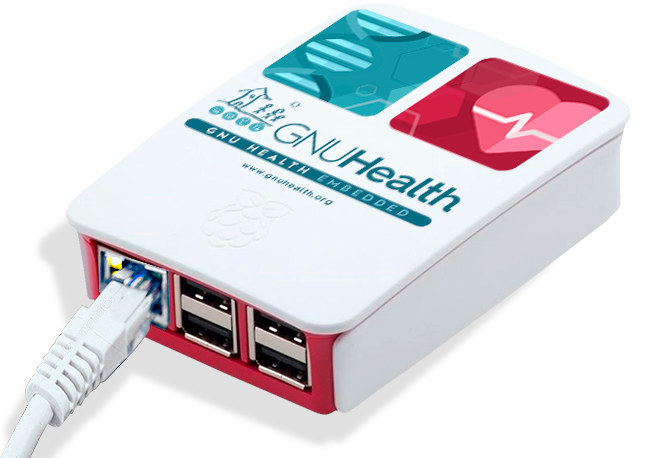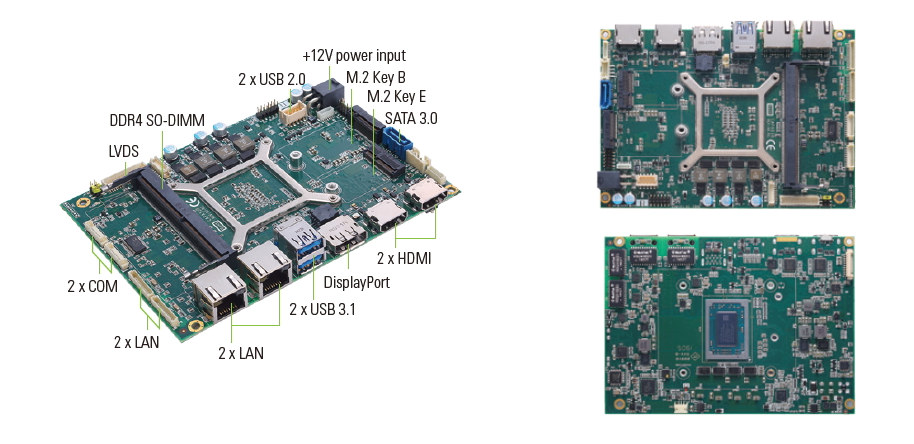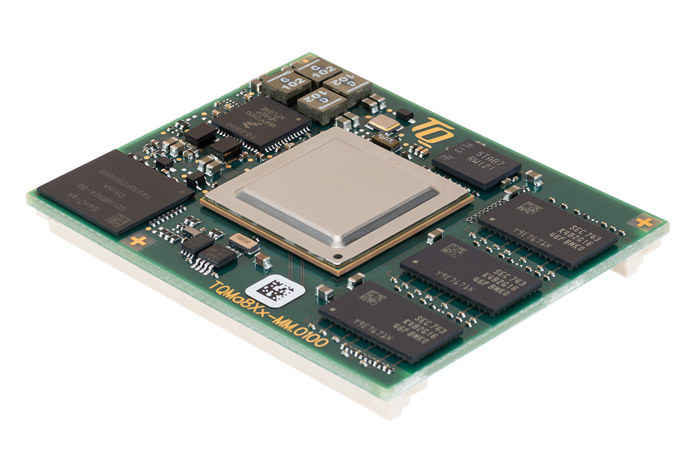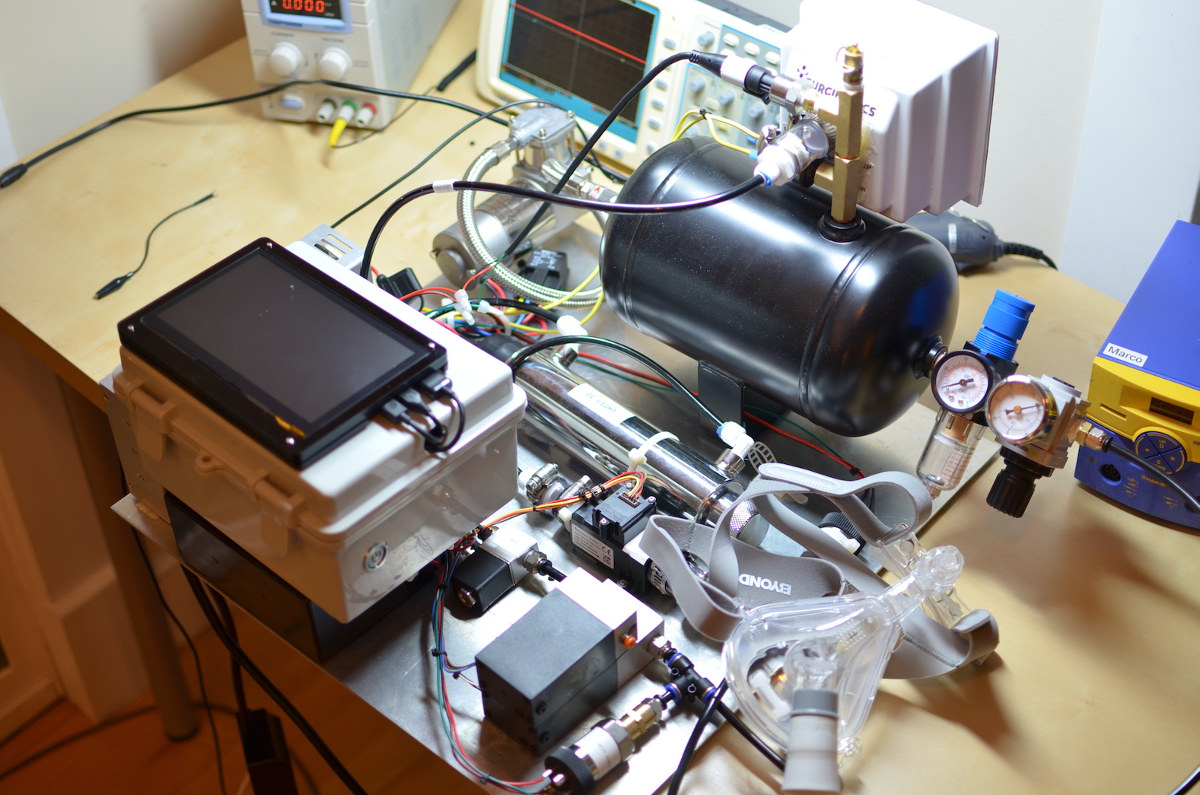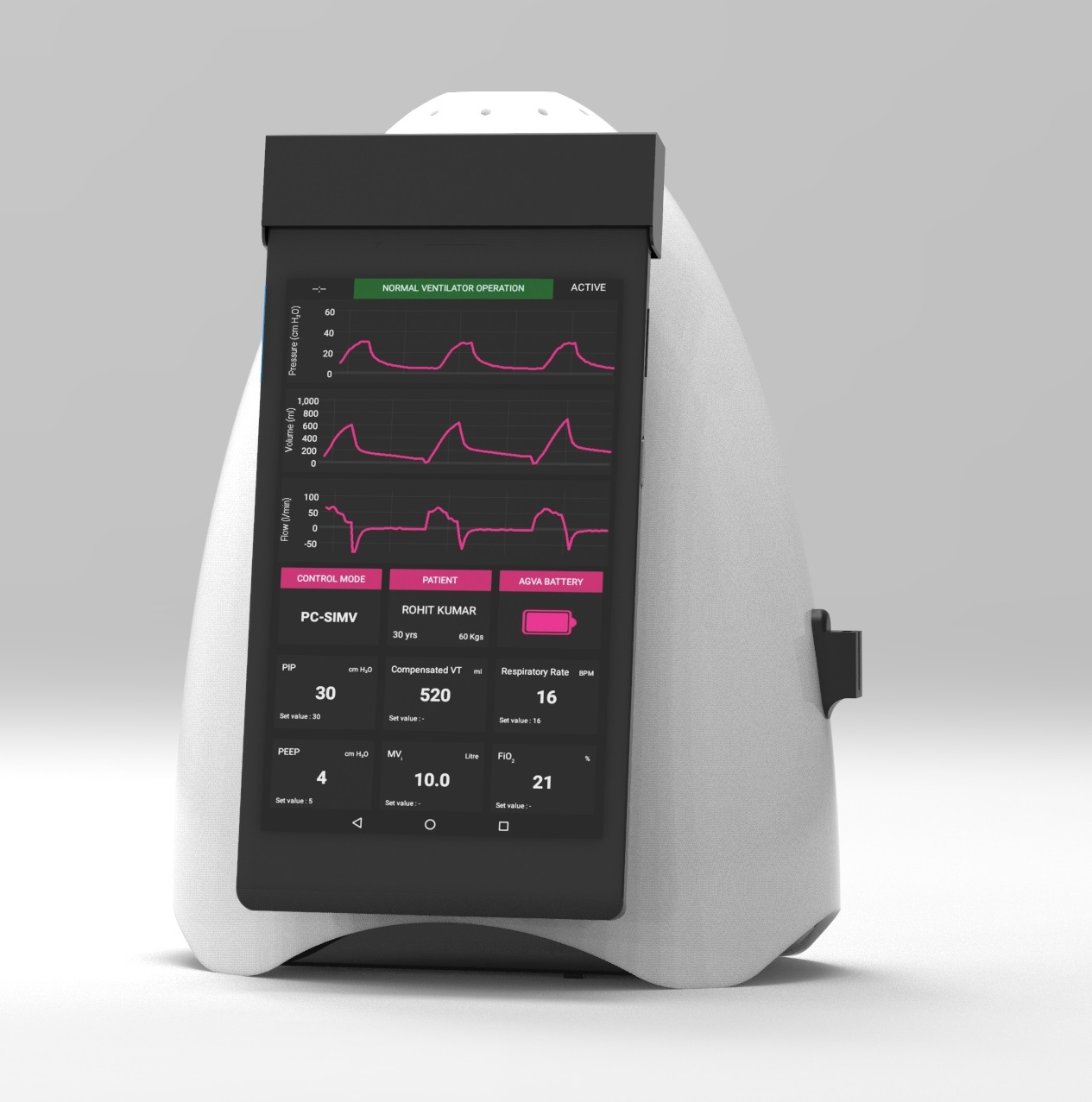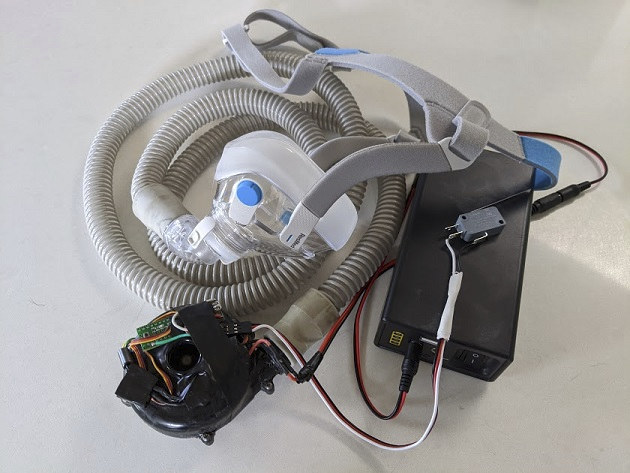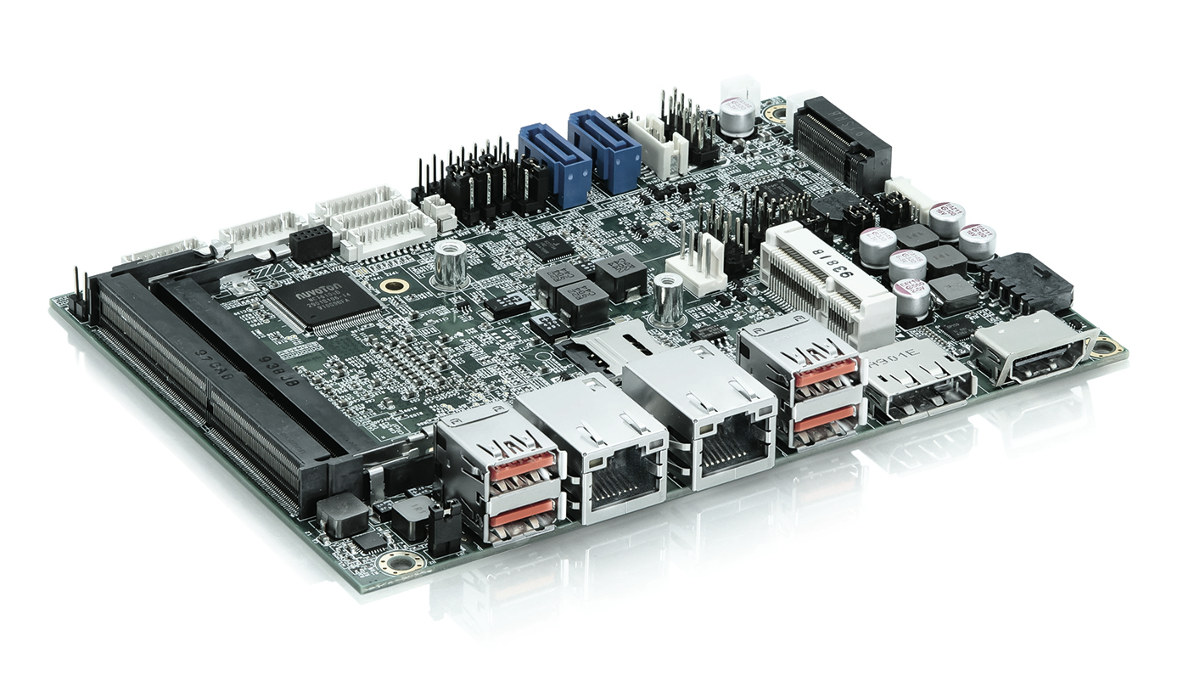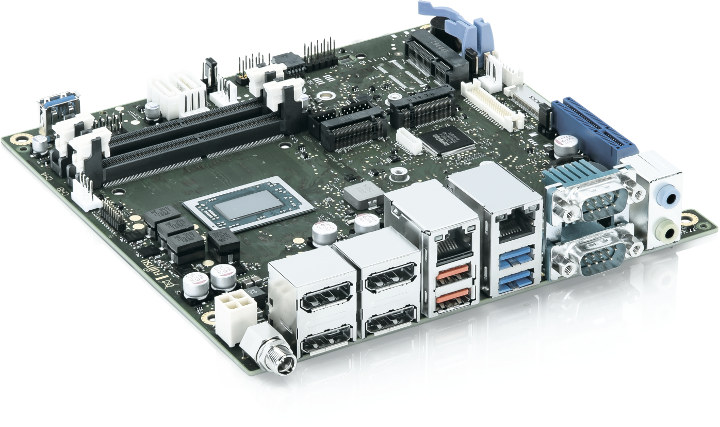GNU Health (GH) is a free and open-source Health and Hospital Information System (HIS) that can manage the internal processes of a health institution, such as financial management, electronic medical records (EMR), stock & pharmacies or laboratories (LIMS). It is already used in various hospitals, health centers, and medical research facilities in various countries, most developing countries, across the world. The program would normally be installed on x86 servers running Linux or FreeBSD, but there’s also a version for Raspberry Pi 3 and 4 based on openSUSE called GNU Health Embedded, and work is being done to port the solution to Olimex OlinuXino SBC’s. Contrary to what the photo above implies, GNU Solidario does not sell the hardware pre-loaded with GNU Health Embedded, but you can download it for free from their servers, and if you want to support the project you could always make a donation. As I understand […]
AMD Ryzen Embedded V1605B/V1807B SBC Offers Four GbE Interfaces, Four Video Outputs
We’ve written about several AMD Ryzen Embedded V1000 SBCs and many of them fully leverage the processor multimedia capabilities with support for four 4K displays, but Axiomtek CAPA13R 3.5″ Embedded SBC adds an extra twist by also offering four Gigabit Ethernet ports. The board is equipped with either Ryzen Embedded V1807B or V1605B, up to 16GB RAM, and offers two M.2 sockets for storage and connectivity. Four independent display support is achieved through a mix of three types of video output including two HDMI ports, one DisplayPort, and one LVDS connector. Axiomtek CAPA13R V1605B/V1807B SBC specifications: SoC – AMD Ryzen Embedded V1807B ( 35-54W) or V1605B (12-25W) quad-core processor with Radeon Vega 8 graphics System Memory – 1 x 260-pin SO-DIMM socket for up to 16GB DDR4-2400 (V1605B), 16GB DDR4-3200 (V1807) Storage – SATA 3.0 port (6Gbps), support for M.2 SATA/NVMe SSD in 22x42mm or 30x42mm form factor (Key B […]
TQ Group Announces NXP i.MX 8X ARM Cortex-A35 Modules as the Processor Finally Becomes Available
TQ Group, headquartered in Germany, has launched two NXP i.MX 8X Cortex-A35 modules with TQMa8Xx and TQMa8XxS SoMs, with the latter being SMARC 2.1 compliant, and both targeting various applications ranging from medical devices, HMIs, industrial controllers and industrial Internet of Things (IIoT) to gateways, building automation, transport, and robotics. The press release explains NXP will officially launch i.MX 8X CPUs on May 14, 2020. We first heard about i.MX 8X in 2016, before an official announcement in 2017, and we wrote about Toradex i.MX 8X SoM in 2018, plus 96Boards AI-ML SBC in 2019, so I naively believed the processor had been around for a couple of years, but the Toradex SoM product is still shown as an “early product announcement” [Update: the page has just been updated since it is now shipping as well], and AI-ML board has just launched with 26 units available on Arrow website. Some […]
Raspberry Pi powered Ventilators and 80+ Open Source Ventilators Listed & Ranked
With the (potential) shortage of ventilators due to COVID-19 pandemic, people have been working together to create cheaper and/or open-source ventilators, and we previously covered a smartphone-powered ventilator, as well as an open-source Arduino ventilator. It should come as no surprise some companies have started to make ventilators powered by Raspberry Pi boards. Raspberry Pi Zero Production Ramped up for Ventilators Tom’s Hardware reports the Raspberry Pi Foundation is specifically ramping up production of the $5 Raspberry Pi Zero because manufacturers are indeed integrating the tiny SBC into ventilators. Eben Upton, CEO and Founder of Raspberry Pi Foundation/Trading, explains: One of the main challenges with rapidly scaling manufacture of products like this is that you may be able to surge production of the air-handling elements, but you still need to provide the control element: often the components you need are on 20-week lead times and (hopefully) we’ll be out of […]
AgVa Phone Ventilator Connects to a Smartphone to Fight COVID-19
With the world at his knees, fighting the current coronavirus pandemic, which has impacted millions of lives around the world psychologically, economically, and physically. Engineers, scientists, politicians around the world are looking for ways to assist in stopping the virus spread, helping the critically ill people, and help restore society to the way it was before. One major highlight during this COVID-19 crisis is the lack of enough ventilators for patients, a piece of critical equipment that greatly affects the breathing of critically ill patients. There are not enough ventilators available in hospitals right now for all of the potential patients who will be struck by the virus, so it is clear we need more ventilators. Makers are joining the call to service with their existing maker tools, and an example is the attempt to make a low-cost, open-source Arduino ventilator device. Another solution is the AgVa phone ventilator produced by […]
An Arduino based Open Source Ventilator to Fight against COVID-19?
COVID-19 has disrupted most people lives well beyond the health crisis, with an economic fallout on-going that may lead to a 24% GDP contraction in the US and up to 12% worldwide in Q2 2020, and I assume the consequences may span over several years, so we should do everything to mitigate any effects from the disease. Right now, the urgent part is to handle the health crisis, and there’s a shortage – or soon will be – of medical supplies such as ventilators for people in critical conditions, and if hospitals become full they’ll start refusing admissions of some people even in critical conditions, as it happened in Wuhan, letting people die at home. So there are various initiatives and projects to develop open-source ventilators. First, Innovation Management reports Ennomotive has launched a non-profit online competition for the ideation of low-cost, easy-to-build solutions with the goal of speeding up […]
AMD Ryzen Embedded based SBC-VR1000 SBC to Power Edge Computing & Graphics Applications
We just wrote about a 3.5″ Ryzen Embedded SBC a few days ago, namely SECO SBC-C90 single board computer, after mentioning there were few such AMD options in the 3.5-inch form factor with the only other board we covered so far being IBase IB918. But there’s now at least a third option with Kontron introducing SBC-VR1000 3.5-inch board powered by AMD Ryzen Embedded V1000-series or R1000-series processor, and designed for “intensive edge computing and graphics applications” including digital signage, digital casino gaming, kiosk, retail, banking, education, medical imaging, as well as industrial control and automation. Kontron SBC-VR1000 specifications: SoC (one or the other) AMD Ryzen V1605B quad-core processor @ up to 3.60 GHz with 4M cache, AMD Radeon Vega 8 GPU; 15 W TDP AMD Ryzen V1202B dual-core processor @ up to 3.20 GHz with 4MB cache, AMD Radeon Vega 3 GPU; 15 W TDP AMD Ryzen R1606G dual-core processor […]
Kontron Launches AMD Ryzen Embedded Mini-ITX Board for Graphics Applications
We’ve seen several AMD Ryzen Embedded boards launched over the last couple of years, but the only one we covered here that happens to follow the mini-ITX form factor was iBASE MI988 motherboard powered by a choice of Ryzen Embedded V1000 processors. But there are others including Sapphire IPC-FP5V 10GbE embedded mini-ITX motherboard, and Kontron has just announced the D3713-V/R mITX motherboard with AMD Ryzen Embedded V1000/R1000 processor and aimed at “demanding graphics applications” such as kiosks, infotainment, digital signage, professional casino gaming systems, medical displays, as well as thin clients and industrial PCs. Kontron D3713-V/R mITX specifications: SoC (one or the other) AMD Ryzen Embedded V1202B dual-core/quad-thread Zen processor @ 2.3 GHz / 3.2 GHz (Boost frequency) with RADEON VEGA 3 graphics; 12W to 25W TDP AMD Ryzen Embedded V1605B quad-core/octa-thread Zen processor @ 2.0 GHz / 3.6 GHz (Boost frequency) with RADEON VEGA 8 graphics; 12W to 25W […]


